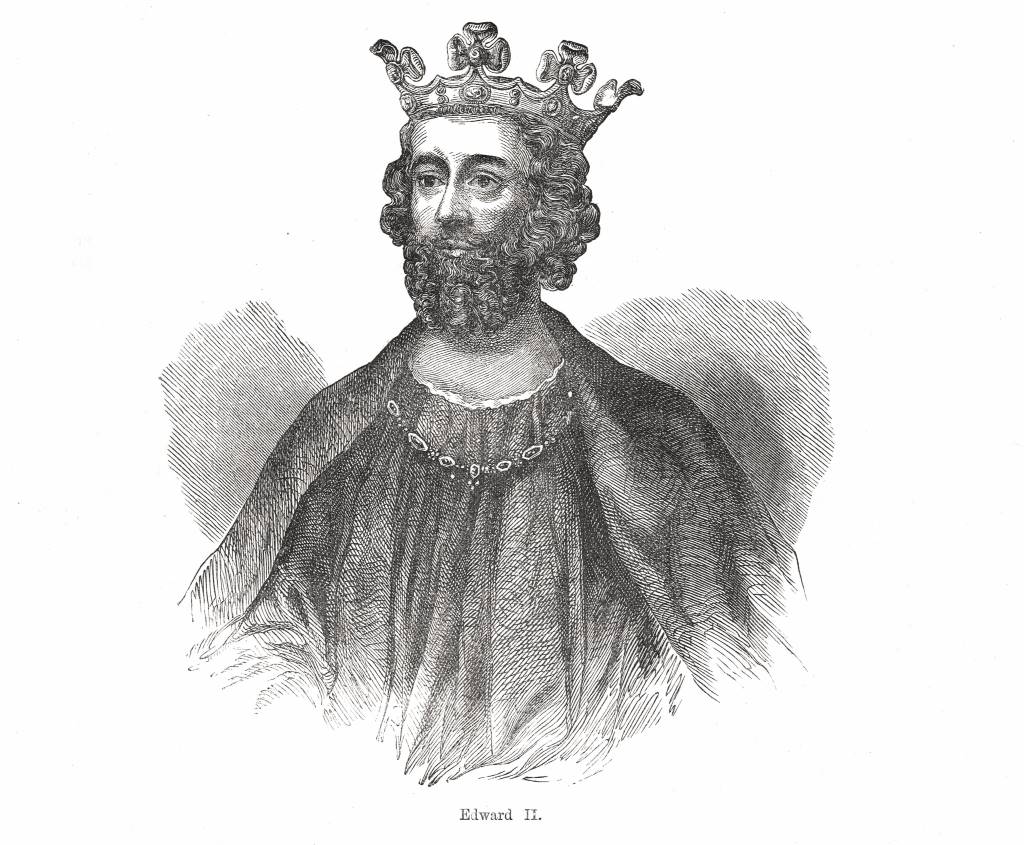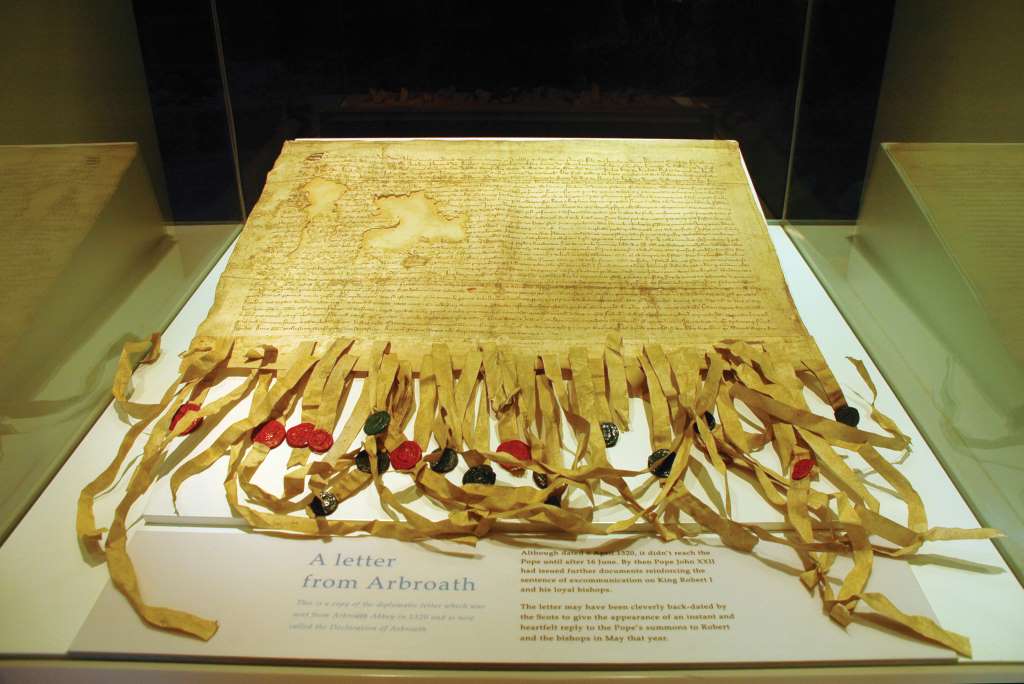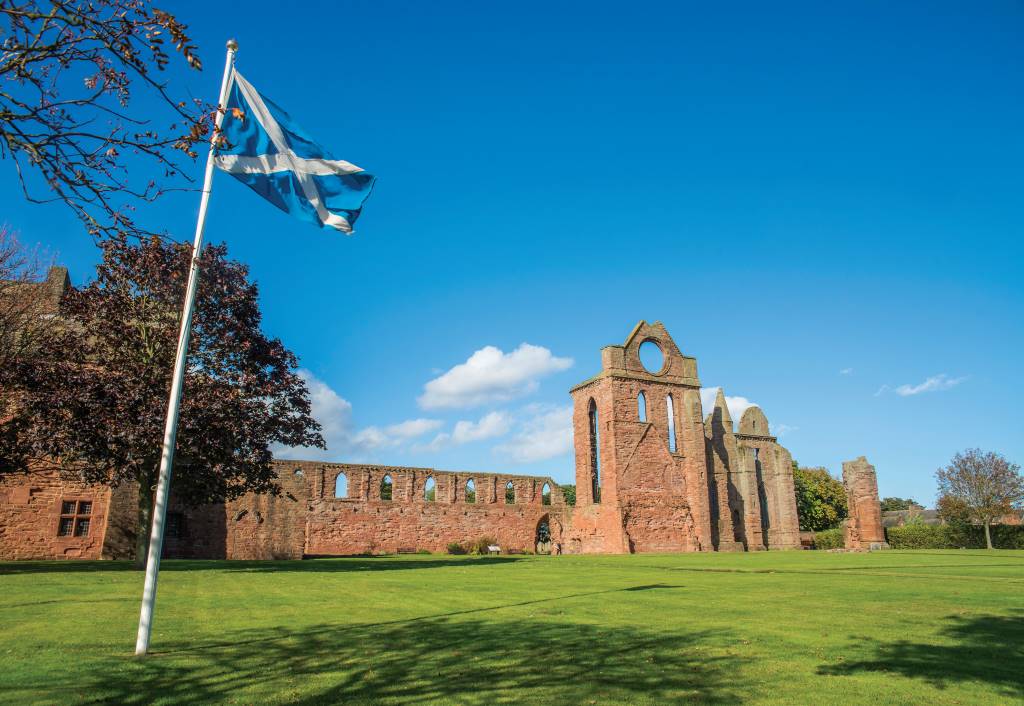2020 marks the 700th anniversary of the Declaration of Arbroath, a precursor to the American Declaration of Independence
MORE FROM SCOTLAND MAGAZINE
April 2020 marked the 700th anniversary of the sealing of one of the most famous documents in Scotland’s history: the Declaration of Arbroath. The lead up to and story behind the declaration is as captivating as ever and was awarded ‘Memory of the World’ status by UNESCO in 2016 for its international importance.
Here, we journey through the events preceding the declaration’s creation with a look at its purpose and legacy to try and understand the lasting significance of this fascinating artefact.
The year 1286 sparked a series of unfortunate events that spiralled into a succession crisis in Scotland. It began with the sudden death of Alexander III, who had ruled since 1249. He sadly outlived his three children and his only legitimate heir, granddaughter Margaret, Maid of Norway, died shortly after him and before she could be crowned. This left Scotland leaderless and governed temporarily by nobles under the catchy moniker, Guardians of Scotland. It pushed the country close to civil war as rival claimants, John Balliol and Robert Bruce (father of Robert the Bruce), both declared their rights to rule.
It was in this maelstrom of tension that the wily English monarch, Edward I (or Edward Longshanks), saw his chance to fulfil his ambition of sewing Scotland into his kingdom by reasserting English claims of overlordship. Through a loophole in medieval law, he happily played his part choosing the next King of Scotland, opting for John Balliol. However, Edward I couldn’t resist demanding homage, troops and taxes before eventually invading. The Battle of Dunbar in 1296 marked the start of the Wars of Scottish Independence.
So followed decades of conflict and turbulence, not to mention an evolving cast: King John Balliol abdicated and went to France in 1299 leaving Scotland monarch-less again, ushering in another set of guardians, including William Wallace and Robert the Bruce; Edward I died in 1307 and his son, Edward II, became King of England.
Following the death of his father, Robert the Bruce had a strong claim to the Scottish throne but he also had an image problem. He was believed – although accounts differ – to have committed a cardinal sin: the killing of regal rival John Comyn at the high altar in Greyfriars Church, Dumfries in 1306. Nevertheless, soon after, he was crowned King of Scots.

But mud (or should that be blood) sticks and this great sin, combined with what the papacy saw as Bruce rejecting their efforts to orchestrate peace with England, led to him being rapidly ex-communicated by the church, thereby eroding any hope of the legitimacy he needed as the newly-crowned King of Scotland.
By 1320, Robert I had been king for 14 years. He had won the hearts and minds of many people across Scotland, was a master of guerilla warfare and revered for his sweeping victory at the Battle of Bannockburn in 1314. Scotland was, theoretically, in the position to claim its independence. However, Bruce still lacked official recognition and Scotland was devoid of sovereign status.
The declaration was an attempt to get back in the good books with the papacy. If the Pope granted his request for Scotland to be recognised as a sovereign state and accepted him as the lawful ruler, this would legitimise Robert I, not just domestically but internationally.

Practically speaking, the Declaration of Arbroath was a letter from leading members of the Scottish nobility to Pope John XXII, residing in Avignon. It was drafted in Arbroath Abbey, a logical location being home to the king’s chancery. Dated 6 April 1320, it was inscribed in Latin and sealed – as documents were not yet signed but stamped – by eight earls and around 40 barons.
Dr Alice Blackwell, Senior Curator of Medieval Archaeology and History at National Museums Scotland, says: “The document is not a statement or a literal declaration.” In fact, it was one of a trio of letters sent to the Pope from Robert I, the Bishop of St Andrews and the barons of Scotland. Blackwell continues, “Together with the accompanying letters, the declaration aimed to show a united front – king, community and church”: “…as long as but a hundred of us remain alive, never will we on any conditions be brought under English rule. It is in truth not for glory, nor riches, nor honours that we are fighting, but for freedom – for that alone, which no honest man gives up but with life itself.”
Although the three letters sent to Avignon did not survive, the copy of the barons letter kept for reference in Scotland did,” says Blackwell, and “that is the document we know today as the Declaration of Arbroath. So, although it is singularly iconic now, it was never intended to be such.”
What was the aim of the declaration? As head of the church and “a kind of international arbitrator,” says Blackwell, the Pope was no stranger to petitions from kings or the Anglo-Scottish conflict. “To Robert, the danger was that the Pope would side with Edward II.” Blackwell continues, “The aim of these documents was two-fold: to assert Scotland’s long pedigree as a sovereign kingdom and to demand that Robert I was recognised as its legitimate monarch.”
Blackwell believes there’s another element that demands a mention: “it was an initiative borne of political guile – an act of international diplomacy.” But could it also have been something greater – perhaps a defining moment in constitutional history, an early contract between the king and his people?
A quick look at this passage translated from the declaration hints at just that: “Yet if he [Robert I] should give up what he has begun, and agree to make us or our kingdom subject to the King of England or the English, we should exert ourselves at once to drive him out as our enemy and a subverter of his own rights and ours, and make some other man who was well able to defend us our King.”
In isolation, no, it did not deliver the immediate recognition Robert I sought. The Pope’s reply, which arrived dated 28 August 1320, acknowledged the letters but urged him to make peace with King Edward II.
It would be another eight years until the Pope lifted the ex-communication of Robert I, and King Edward III would officially recognise Scotland as a sovereign state with Robert I as its lawful king.
Robert the Bruce died in 1329, living just long enough to see his dream of an independent Kingdom of Scotland officially recognised, with the Bruces at its helm. For its part, the Declaration of Arbroath, helped pave the way by adding weight to Robert I’s claim and demonstrating that the named clergy and nobles supported him. There’s a lingering suggestion that the 1776 American Declaration of Independence was modelled on the Declaration of Arbroath. However, Blackwell points out that “At present, there is no convincing evidence that the Declaration of Arbroath influenced the United States Declaration of Independence.” She continues, “In fact, it may be that the influence was the other way around; the name ‘Declaration of Arbroath’, was only given to the document in the early 20th century”.

Closer to home, its enduring significance remains debated. As Blackwell stated, the document was a copy of one of three letters – it was not meant to be a stand-alone statement. It was also a political tool; diplomacy in action to achieve a specific goal. The Declaration of Arbroath not only bolstered King Robert I’s claim as the lawful ruler of the sovereign state of Scotland, but acted as a template, laying the foundations of a contract between the monarchy and its people, with the onus on the king to deliver a free society.
Sadly Arbroath 2020 Festival has been postponed until 2021 and will open in April and run until September. Now branded as the Arbroath 2020 + 1 Festival, it will celebrate The Declaration of Arbroath’s 701st Anniversary.
The Declaration of Arbroath is held by National Records of Scotland (NRS). The document in National Records of Scotland is the “file copy” of the Declaration: the only version to survive in its original form was due to go on public display in Edinburgh March 2020. NRS hopes that in due course the exhibition will be rescheduled so that members of the public have the opportunity to see this iconic document. For now you can read a translation of the Declaration of Arbroath in the ‘Declaration of Arbroath 700th Anniversary Booklet‘, which is available to download now.
On 6-8 April 2020 at 13.32pm (and for one month on BBC Sounds) Billy Kay presents a major series on one of the most iconic moments in Scottish and world history, when the nobles, barons, freeholders and the community of the realm of Scotland felt compelled to create the document in 1320.
MORE FROM SCOTLAND MAGAZINE

SCOTLAND MAGAZINE
Published six times a year, every issue of Scotland showcases its stunning landscapes and natural beauty, and delves deep into Scottish history. From mysterious clans and famous Scots (both past and present), to the hidden histories of the country’s greatest castles and houses, Scotland‘s pages brim with the soul and secrets of the country.
Scotland magazine captures the spirit of this wild and wonderful nation, explores its history and heritage and recommends great places to visit, so you feel at home here, wherever you are in the world.